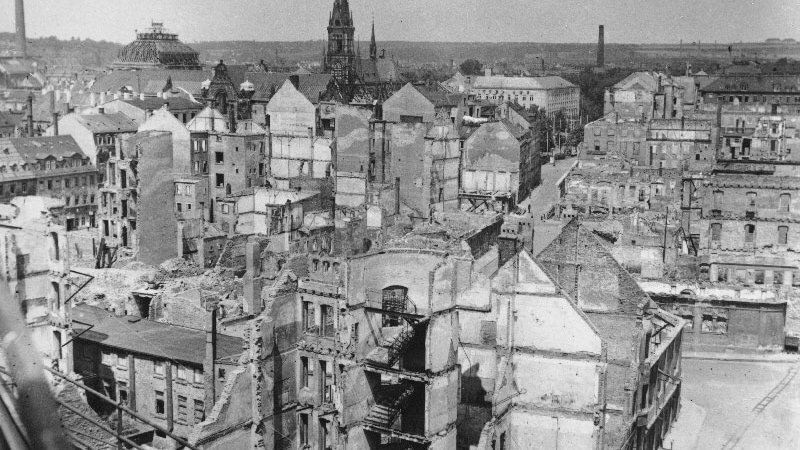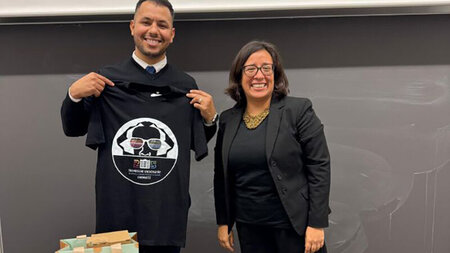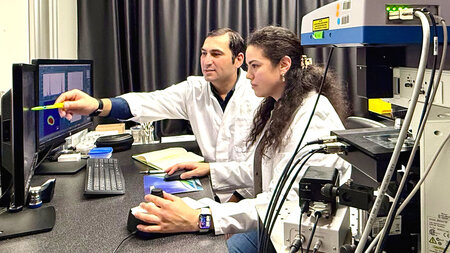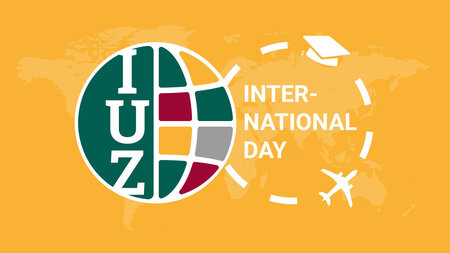A Day Not to Be Forgotten
On Chemnitz Day of Peace, the city commemorates the victims of the bombings of March 5, 1945 - The university predecessor, the Staatliche Akademie für Technik, was also affected by the destruction - University participates in the Day of Peace and Peace Impulses program
-

Chemnitz Day of Peace also commemorates the destruction of the city on March 5, 1945. On the right in the background you can see the building of the Staatliche Akademie für Technik, from which today's University of Technology emerged. Photo: University Archive
The ground trembled from countless bomb impacts on March 5, 1945. It was not the first time since the beginning of the war conjured up by the Nazis that Chemnitz had come under fire, but this time the attacks could not be compared with previous ones. The wailing of sirens could be heard throughout the city, announcing the air raid of British and American bombers. While in the morning there were about 250, in the evening, starting at 9:37 p.m., about 700 planes bombed the city. This attack lasted 31 minutes, destroyed 80 percent of the city center, and took the lives of more than 2,100 people. "A horrific night attack on Chemnitz. The sky was blood-red from the burning city. Constantly, there were impacts," wrote Irene Pornitz, a contemporary witness, in her diary. She noted other impressions of the destroyed city, which can be read in the book "Chemnitzer Erinnerungen 1945: eine Dokumentation in Wort und Bild über die Zerstörung von Chemnitz im Zweiten Weltkrieg" (Chemnitz Memories 1945: A Documentation in Words and Pictures of the Destruction of Chemnitz in World War II): "On Stollberger Straße a stream of thousands of refugees rolls out, blackened faces, burns, exhausted, apathetic, desperate. They push handcarts and baby carriages with rescued belongings, small children, and elderly who could not go any further. Some in colorful bathrobes or only in woolen blankets, an indescribable procession of misery that will never be forgotten." In the time that followed, she gave shelter to more than 40 people, for even a few days later the city was still in flames, and hardly any building offered protection from the cold. Chemnitz is a dead city, the Allies announced one day after the bombing.
Forced pause for academic education
The Staatliche Akademie für Technik in Chemnitz, a forerunner of today's Chemnitz University of Technology, was almost dead by this time. After many bombing raids, the academy was closed on February 24, 1945 as a result of war damage. Throughout the course of the Second World War, teaching was severely affected. While at the beginning of the war, there were 366 students at the academy, by the winter semester of 1942/43, there were only 102. Some students as well as teachers were called up during the war, others were killed by air raids. But also many rooms of the academy were destroyed, making teaching impossible. On February 14, 1945, an aerial mine destroyed numerous windows and doors of the academy, which was located at Schillerplatz at that time. The heating systems and the water supply failed. On March 5, parts of the aircraft construction department were destroyed by the large-scale attack, as were rooms of the testing center for motor vehicle traffic and the dye works building. It was not until two years later, on April 9, 1947, that the institution was reopened, now offering a new learning environment for 466 students as a technical school under the name Technische Lehranstalt Chemnitz.
Peace for the city - a city for peace
In the meantime, 78 years have passed. In Chemnitz, the damage from the bombing has long since disappeared. But despite the numerous structural changes, the memory of March 5 remains, for example through eyewitness accounts, photographs - or the Chemnitz Day of Peace. The honorary working group of the same name and the City of Chemnitz, together with many partners, including Chemnitz University of Technology, will also commemorate the victims of the Second World War on March 5, 2023, through numerous program offerings. They also make a statement for peaceful coexistence, democracy, and cosmopolitanism. In view of the terrible events in Ukraine, this year's Peace Day appears in a special light.
A "peace sign" for Chemnitz - running action of the Stadtsportbund Chemnitz e. V. and the student initiative Lauf-KulTour e. V.
This year's Day of Peace will also be a sporty occasion. For this purpose, the student initiative Lauf-KulTour e. V. and the Stadtsportbund Chemnitz e. V. have developed a special running offer. The idea is to draw the peace sign on the Chemnitz city map as a symbol for peace. Running enthusiasts can meet at 11 a.m. on March 5 at Neumarkt in Chemnitz to run together - divided into two groups - on a route of just under 10 kilometers in the shape of the peace sign. The run will be tracked via GPS and will appear in real time on a map on the Internet. The organizers ask those interested in running to register online: https://www.lauf-kultour.de/2023/02/17/chemnitzer-friedenslauf-05-03-2023/
Remembering the authors whose books were burned from 1933 onwards
Starting at 1:30 p.m., Chemnitz authors, librarians, and booksellers will read at Neumarkt from books that were thrown on pyres and burned starting in March 1933. From Chemnitz University of Technology, Prof. Dr. Bernadette Malinowski, head of the Professorship of Modern German and Comparative Literature, and Angela Malz, Director of the University Library, are participating in the event.
Chemnitz Peace Impulses on March 9, 2023: "Ways to peace - a common reflection"
A few days after the Chemnitz Day of Peace, the organizers invite you to an event as part of the series Chemnitz Peace Impulses. Under the motto "Ways to peace - a common reflection" on March 9, 2023 from 7 p.m. in the youth church St. Johannis, Theresenstraße 2, questions about the war in Ukraine and possibilities for its end will be discussed. Prof. Dr. Eric Linhart, head of the Professorship of Political Systems at Chemnitz University of Technology, will be available for discussion with the participants after a keynote speech. Theses that were already available for reading at the Chemnitz Day of Peace at Neumarkt and on which visitors could comment in writing on a poster wall there, are intended to provide guidance for the discussion.
Commemoration of the victims of the Nazi regime beyond the Chemnitz Day of Peace
The Jewish and other victims of the bombing of Chemnitz in the Second World War are not only commemorated annually at the Chemnitz Day of Peace. Numerous monuments have also been erected in Chemnitz since the end of the Third Reich. One name that comes up again and again when searching for artistic works on this chapter of German history is that of the Chemnitz sculptor Volker Beier. In addition to the memorial stele on Chemnitz's Stephanplatz to commemorate the Old Synagogue, which was destroyed during the November pogroms of 1938, he also erected a memorial stone in the inner courtyard of Chemnitz University of Technology at Straße der Nationen 62 in 1988 to commemorate the deportation of numerous Chemnitz Jews.
The memorial stone was created in cooperation with the Karl-Marx-Stadt City Council, the Jewish Community and TU Karl-Marx-Stadt. Today, the memorial still stands in its place next to a fully grown chestnut tree, which contrasts with the tree stump in the shape of the Star of David depicted by Volker Beier. "I wish that people who pass by it will bow their heads and remember how the Jewish citizens took the last steps in their homeland," the sculptor said. According to information from the Chemnitz University Archives, a total of ten transports of Jewish men, women and children left from the courtyard of the Böttcher Building for fascist extermination camps between 1942 and 1945.
The complete program of the Chemnitz Day of Peace 2023: www.chemnitzer-friedenstag.de
By the way: More personal insights into March 5, 1945 are offered by the already mentioned book "Chemnitzer Erinnerungen 1945: eine Dokumentation in Wort und Bild über die Zerstörung von Chemnitz im Zweiten Weltkrieg", published by Heimatland Sachsen, 2001.
(Article:Mario Steinebach / Translation: Brent Benofsky)
Matthias Fejes
01.03.2023




